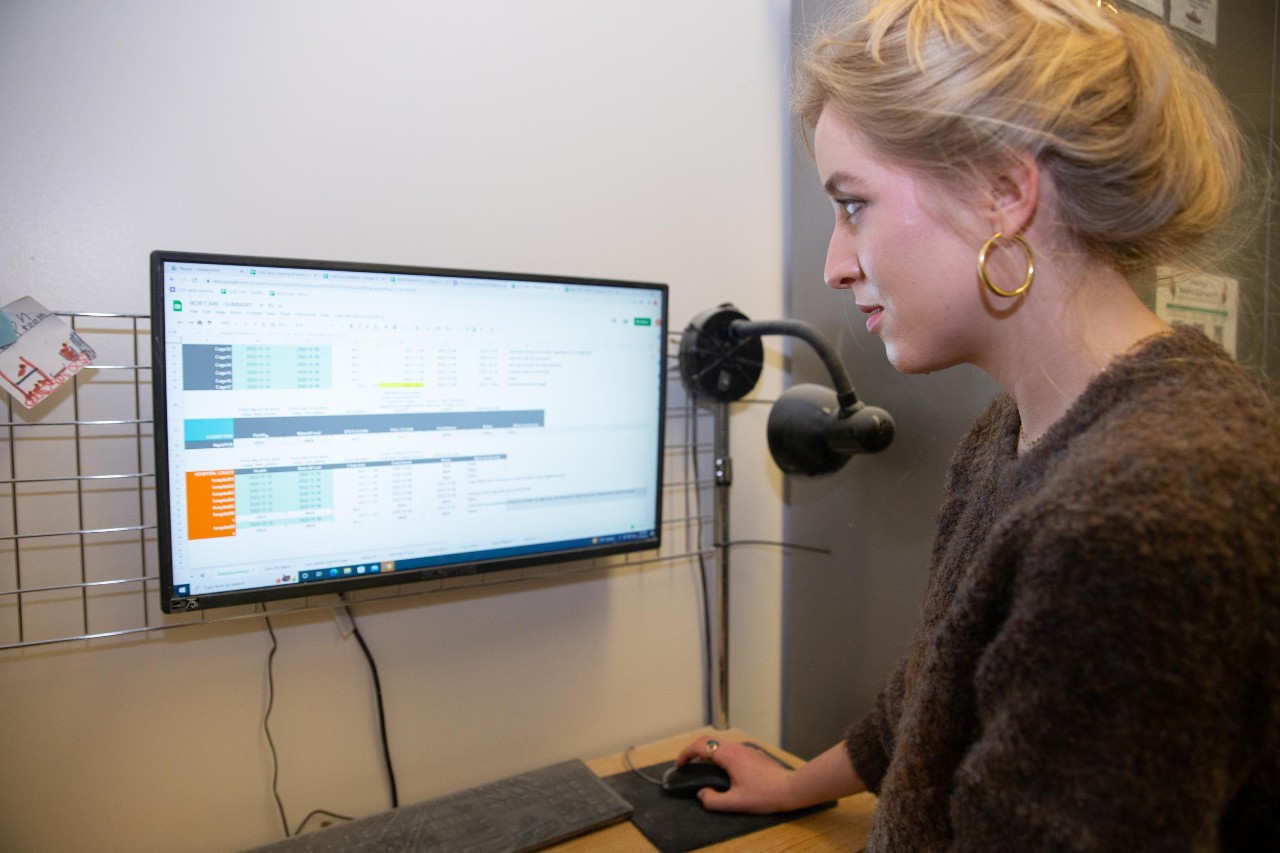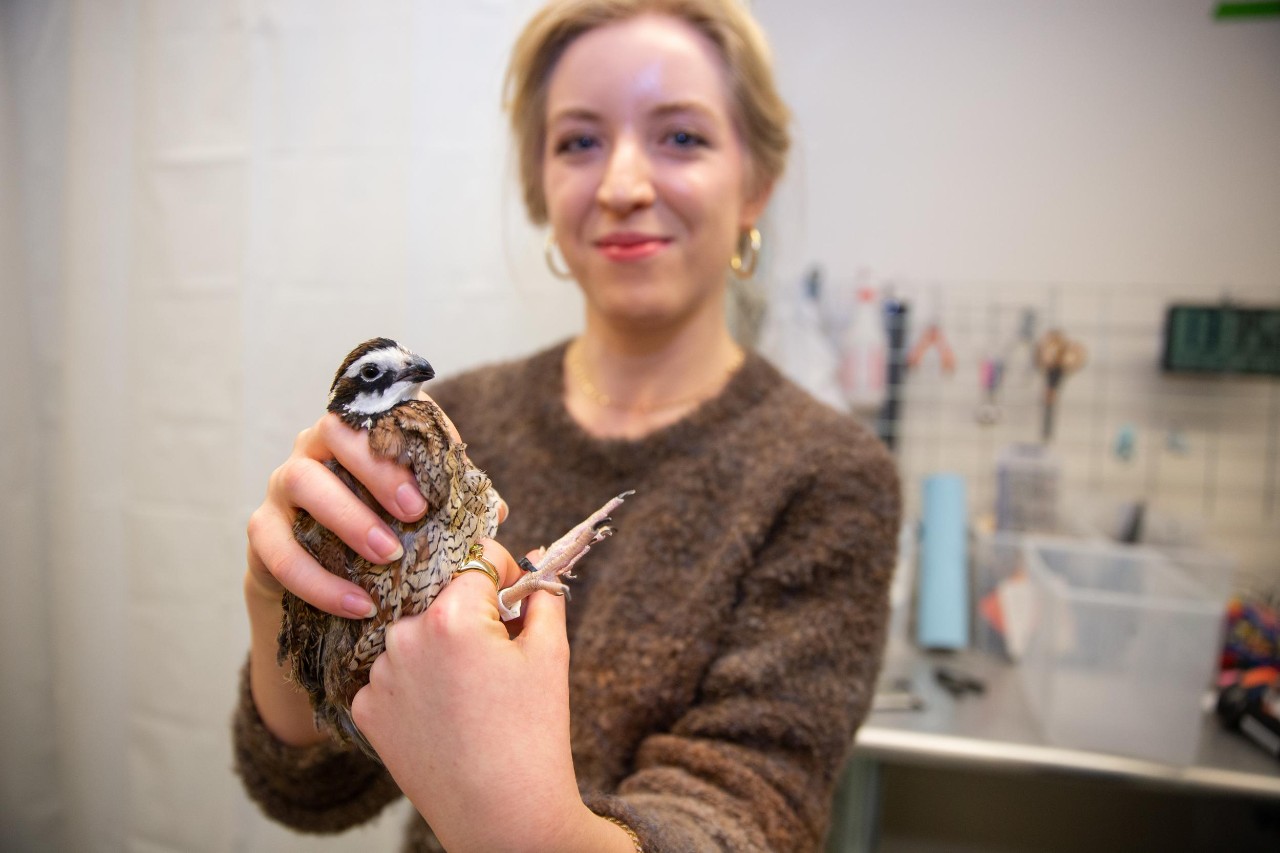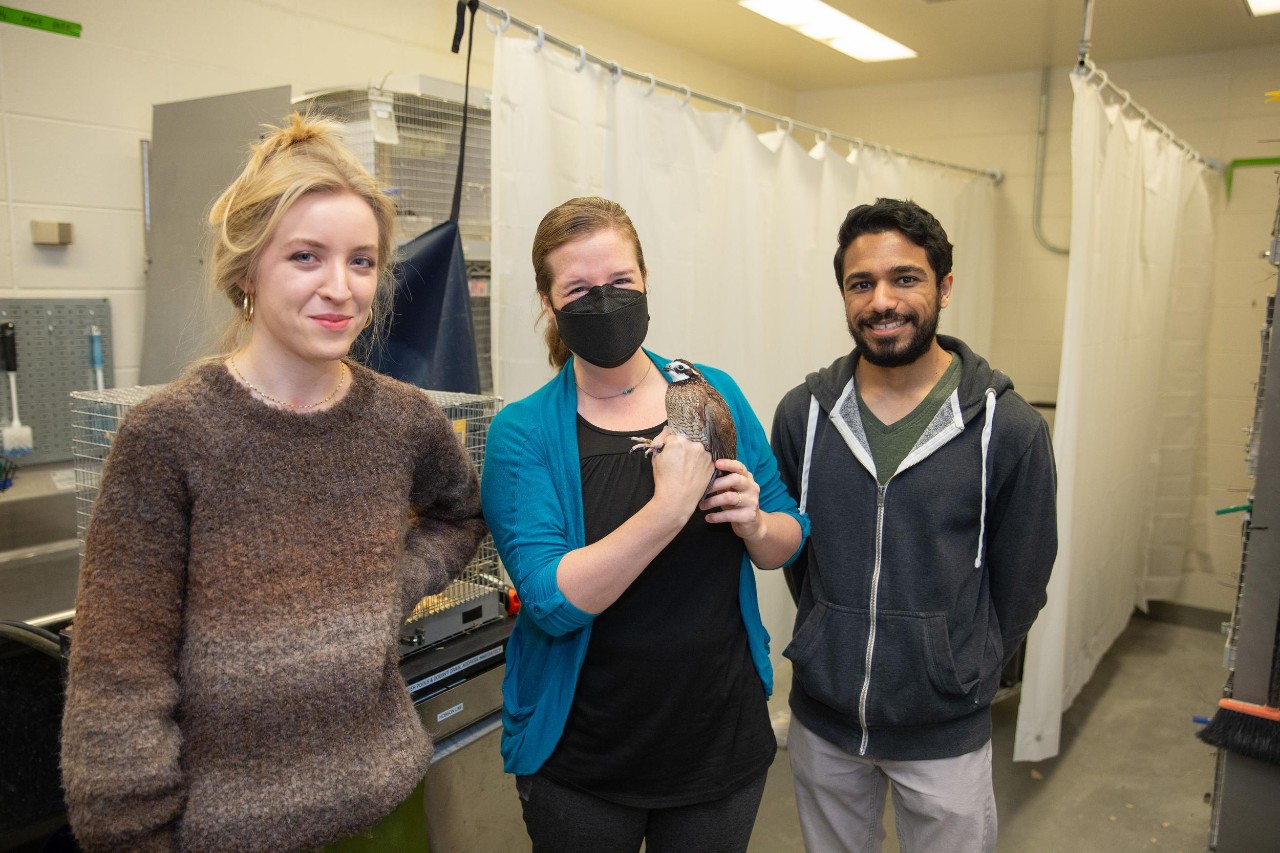A University of Cincinnati biologist is using tech more commonly found in Amazon distribution warehouses to care for birds in her lab.
UC Assistant Professor Elizabeth Hobson and her students are studying northern bobwhite quail. The researchers call these fluffy, chestnut-colored birds "the bobs" - and they're objectively adorable, clucking and calling to each other across the lab.

UC assistant professor Elizabeth Hobson uses a QR scanner to help supervise the care of quail in her biology lab. Photo/Andrew Higley/UC Marketing + Brand
Outstanding tasks are highlighted in a different color, making it easy for the lab team to verify that all birds have received daily care.
"Once a week, we clean the cages. Twice a week we do enrichment," Hobson said. "They all happen on different schedules. With different students taking care of the birds, the scanning system has been extremely helpful to keep track of everything.
"Our system makes it fast and easy to collect detailed data on care for each cage. And doing the scanning is actually kind of fun.
Hobson said she drew inspiration from the QR codes biology labs use to track samples or complete surveys. But the codes are used in lots of ways.
"Some unexpected sources of inspiration were online Etsy sellers who track their inventory with QR codes and grade school teachers who track student attendance, again with QR codes." Hobson said.
Hobson wrote about her novel animal-care system in the journal Animal Behavior and Cognition.

UC senior Sophia Clemen examines a care spreadsheet for northern bobwhite in assistant professor Elizabeth Hobson's biology lab. Photo/Andrew Higley/UC Marketing + Brand
Hobson and her students are studying the quail's social behavior and communication.
Doctoral candidate Sanjay Prasher is looking at how groups of quail build their social systems. Prasher put birds in a flight pen together for the first time and recorded social interactions as the quail got to know each other.
"I had the birds in the flight pen for three weeks, each separated by a break, to see whether relationships remain stable over time, even when they haven't interacted in a while," Prasher said. "Can they still recognize each other? Can they remember specific relationships?"

UC senior Sophia Clemen is studying the calls of northern bobwhite to help conservationists identify the calls of individual male birds in the wild. Photo/Andrew Higley/UC Marketing + Brand
For her senior capstone project, UC College of Arts and Sciences undergraduate student Sophia Clemen is studying the bobwhite's vocalizations, including its eponymous, musical "bob-white" call.
She and Hobson created tiny soundproof studios for the birds to record their calls. These calls can then be analyzed as spectrographs, which represent the frequency and duration of the calls.
"We're hoping to get good recordings and then determine whether the bobs have unique, identifiable calls. That could have big conservation implications because it's difficult for biologists in the field to tell if one or more birds are calling. This makes it hard to estimate things like population size and composition, and the ranges of the quail," Clemen said.
Bobwhite numbers have declined sharply across most of their historic range. In Ohio, populations 50 years ago numbered in the millions, but several population crashes since then have severely impacted their numbers. Just since 2011, the bobwhite population has plummeted 71% and now there are fewer than 3,000 wild bobwhite quail living in the state.
"The initial crash seems to be tied to a couple really bad winters in the 1970s," Hobson said. "But at the same time, they were getting hit with habitat loss. That combination has made it hard for them to recover. We're at the very early stages of this new vocalization project, but we're hoping that we can use our results to better study wild bobwhite populations."
Students said the little birds have outsize personalities.
"Everyone loves the bobs. They're round and puffy with big, black eyes and they make super cute little chirps and calls. They definitely have their own personality quirks -- some of the quail are much bolder and more inquisitive towards us than others," Clemen said. "I really enjoy working with them."
Hobson invites undergraduate students who would like to work with the quail and get research experience in Hobson Lab to apply here.
Featured image at top: UC biologist Elizabeth Hobson studies northern bobwhite in her lab. Photo/Andrew Higley/UC Marketing + Brand

UC Assistant Professor Elizabeth Hobson, center, and students Sophia Clemen and Sanjay Prasher are studying the behavior and communication of northern bobwhite. Photo/Andrew HIgley/UC Marketing + Brand






